Related Research Articles

Louis Comfort Tiffany was an American artist and designer who worked in the decorative arts and is best known for his work in stained glass. He is associated with the art nouveau and aesthetic art movements. He was affiliated with a prestigious collaborative of designers known as the Associated Artists, which included Lockwood de Forest, Candace Wheeler, and Samuel Colman. Tiffany designed stained glass windows and lamps, glass mosaics, blown glass, ceramics, jewellery, enamels, and metalwork. He was the first design director at his family company, Tiffany & Co., founded by his father Charles Lewis Tiffany.

Stained glass is coloured glass as a material or works created from it. Throughout its thousand-year history, the term has been applied almost exclusively to the windows of churches and other significant religious buildings. Although traditionally made in flat panels and used as windows, the creations of modern stained glass artists also include three-dimensional structures and sculpture. Modern vernacular usage has often extended the term "stained glass" to include domestic lead light and objets d'art created from foil glasswork exemplified in the famous lamps of Louis Comfort Tiffany.

The Cloisters, also known as the Met Cloisters, is a museum in the Washington Heights neighborhood of Upper Manhattan, New York City. The museum, situated in Fort Tryon Park, specializes in European medieval art and architecture, with a focus on the Romanesque and Gothic periods. Governed by the Metropolitan Museum of Art, it contains a large collection of medieval artworks shown in the architectural settings of French monasteries and abbeys. Its buildings are centered around four cloisters—the Cuxa, Saint-Guilhem, Bonnefont and Trie—that were acquired by American sculptor and art dealer George Grey Barnard in France before 1913, and moved to New York. Barnard's collection was bought for the museum by financier and philanthropist John D. Rockefeller Jr. Other major sources of objects were the collections of J. P. Morgan and Joseph Brummer.

A triptych is a work of art that is divided into three sections, or three carved panels that are hinged together and can be folded shut or displayed open. It is therefore a type of polyptych, the term for all multi-panel works. The middle panel is typically the largest and it is flanked by two smaller related works, although there are triptychs of equal-sized panels. The form can also be used for pendant jewelry.

Grisaille is a painting executed entirely in shades of grey or of another neutral greyish colour. It is particularly used in large decorative schemes in imitation of sculpture. Many grisailles include a slightly wider colour range.
Michiel Coxie the Elder, Michiel Coxcie the Elder or Michiel van Coxcie, Latinised name Coxius, was a Flemish painter of altarpieces and portraits, a draughtsman and a designer of stained-glass windows, tapestries and prints. He worked for patrons in the principal cities of Flanders. He became the court painter to successively Emperor Charles V and King Philip II of Spain.
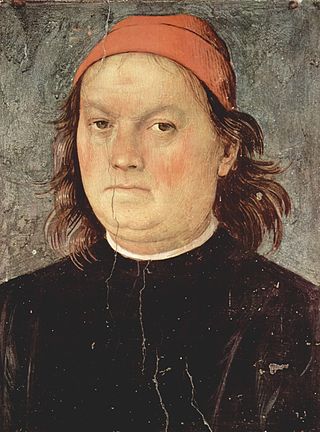
Pietro Perugino, an Italian Renaissance painter of the Umbrian school, developed some of the qualities that found classic expression in the High Renaissance. Raphael became his most famous pupil.

Hildreth Meière (1892–1961) was an American muralist active in the first half of the twentieth century who is especially known for her Art Deco designs. During her 40-year career she completed approximately 100 commissions. She designed murals for office buildings, churches, government centers, theaters, restaurants, cocktail lounges, ocean liners, and world’s fair pavilions, and she worked in a wide variety of mediums, including paint, ceramic tile, glass and marble mosaic, terracotta, wood, metal, and stained glass. Among her extensive body of work are the iconographic interiors at the Nebraska State Capitol in Lincoln, the dynamic roundels of Dance, Drama, and Song at Radio City Music Hall, the apse and narthex mosaics and stained-glass windows at St. Bartholomew's Episcopal Church (Manhattan), and the decoration of the Great Hall at the National Academy of Sciences in Washington, D.C.
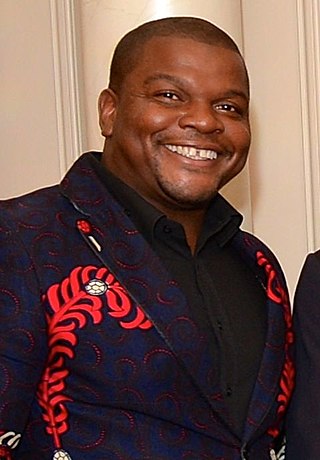
Kehinde Wiley is an American portrait painter based in New York City. He is known for his naturalistic paintings of Black people that reference the work of Old Master paintings. In 2017, Wiley was commissioned to paint former President Barack Obama's portrait for the Smithsonian National Portrait Gallery. The Columbus Museum of Art hosted an exhibition of his work in 2007 and describes his paintings as "heroic portraits which address the image and status of young African-American men in contemporary culture."

Philbrook Museum of Art is an art museum with expansive formal gardens located in Tulsa, Oklahoma. The museum, which opened in 1939, is located in a former 1920s villa, "Villa Philbrook", the home of Oklahoma oil pioneer Waite Phillips and his wife Genevieve. Showcasing nine collections of art from all over the world, and spanning various artistic media and styles, the cornerstone collection focuses on Native American art featuring basketry, pottery, paintings and jewelry.
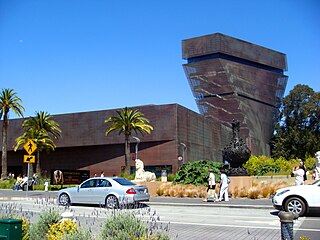
The de Young Museum, formally the M. H. de Young Memorial Museum, is a fine arts museum located in San Francisco, California. Located in Golden Gate Park, it is a component of the Fine Arts Museums of San Francisco, along with the Legion of Honor. The de Young is named for early San Francisco newspaperman M. H. de Young.

Leonard William French OBE was an Australian artist, known principally for major stained glass works.
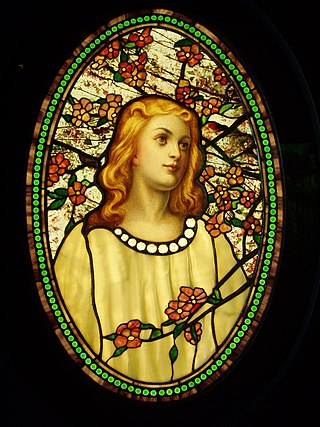
Tiffany glass refers to the many and varied types of glass developed and produced from 1878 to 1929-1930 at the Tiffany Studios in New York City, by Louis Comfort Tiffany and a team of other designers, including Clara Driscoll, Agnes F. Northrop, and Frederick Wilson.

The William K. Vanderbilt House, also known as the Petit Chateau, was a Châteauesque mansion at 660 Fifth Avenue in Midtown Manhattan, New York City, on the northwest corner of Fifth Avenue and 52nd Street. It was across the street from the Triple Palace of William Henry Vanderbilt, which occupied the entire block between 51st and 52nd Streets on the west side of Fifth Avenue.

Nathaniel Hubert John WestlakeFSA (1833–1921) was a 19th-century British artist specialising in stained glass.
Susan Stinsmuehlen-Amend is a glass and mixed media artist who lives and works in Ojai, California.
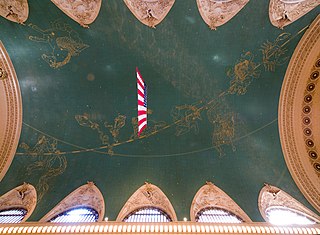
Grand Central Terminal, one of the main railroad stations in New York City, features public art by a variety of artists. Through its status as a transportation and architectural icon, the terminal has also been depicted in many works of art.

Rumors of War is a series of artworks by Kehinde Wiley examining equestrian portraiture in the canon of Western art history culminating in a bronze monumental equestrian statue by the artist of an African-American young man, created in response to the statue of Confederate General J.E.B. Stuart in Richmond, Virginia in particular and similar statues of high-ranking Confederate Army officers, some of which still stand in the United States despite persistent calls for their removal. Since the installation of Rumors of War in Richmond, all of the statues of the military leaders of the Confederacy have been removed from Monument Avenue where they had been since the first decade of the 20th century.

Moynihan Train Hall is an expansion of Pennsylvania Station, the main intercity and commuter rail station in New York City, into the city's former main post office building, the James A. Farley Building. Located between Eighth Avenue, Ninth Avenue, 31st Street, and 33rd Street in Midtown Manhattan, the annex provides new access to most of Penn Station's platforms for Amtrak and Long Island Rail Road passengers, serving 17 of the station's 21 tracks. The hall is named after Daniel Patrick Moynihan, the U.S. senator who had originally championed the plan. The building's Beaux-Arts exterior resembles that of the original Penn Station; both buildings were designed by the architectural firm of McKim, Mead & White.
References
- ↑ "Go". Brooklyn Museum . Retrieved 2 January 2020.
- 1 2 "Stan Douglas, Elmgreen & Dragset, Kehinde Wiley : Moynihan Train Hall". Public Art Fund . Retrieved 6 January 2020.
- 1 2 3 4 5 6 Searcey, Dionne (December 30, 2020). "Let There Be Light, and Art, in the Moynihan Train Hall". The New York Times. ISSN 0362-4331 . Retrieved December 31, 2020.